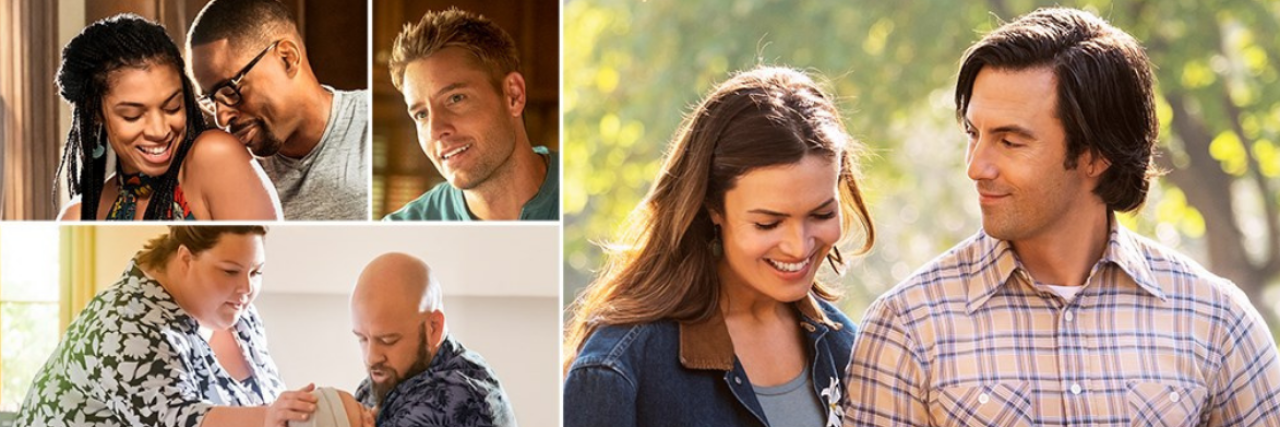The television show “This Is Us” is a staple in our house. We look forward to gathering to watch what the intersecting stories of the characters’ lives will unveil as they are told across time, sparking conversation and emotion within our own family on the other side of the screen.
We welcomed conversations around foster care, adoption, family relationships, substance abuse, death and grief, body image and weight, race, identity and mental health; all conversations that opened doors and windows into connecting, sharing and processing the stories within our family. It is a show we have much gratitude for and excitement over its return, but yet had no idea what to expect as the new season aired on Tuesday, October 27, 2020, during a year filled with so much that no words can fully capture as more continues to occur each day.
My breath was shallow and my hope held tight as the season premiere started. I wondered how they were going to approach the stories this year. I wondered how they would tell each of the characters’ stories and how they would interact with each other. I wondered how they would weave in society’s events between racism, police brutality, politics, challenging family dynamics and strained relationships, navigating mental health struggles and self-care, COVID-19 and exhaustion. I hoped I could connect to the representation while also holding space for disappointment in how I’m used to having these issues glossed over or told in a way that leaves me feeling more exhausted, isolated, misunderstood and hopeless.
But as the season premiere continued, many emotions and connections filled the air of our household. My body and soul filled with gratitude not because they tied it with a pretty sugar-coated bow, but rather because they didn’t. They gave space for life experiences woven together, yet still separate. They told stories with care. Instead of feeling more exhausted, isolated, misunderstood and hopeless, I felt connected, open, seen and held as I watched and reflected on the lives and experiences represented within the stories that filled the screen in that two-hour premiere episode. And as the closing credits came across the screen, I was deeply thankful on a personal level for the five key representations desperately needed at that moment.
1. Reminding me I can show empathy to someone else’s pain without having to take it on and fix it, even if that is the role I have taken or been placed in during the past.
I often find myself labeled as the “friend and family member in the group who is Black, disabled or transgender” and given the role of being the source of information, support, advocacy and educator for all things race, disabilities, sexuality and gender identity that always left me depleted. I was thankful for the representation and role modeling of how Randall approached his siblings, as this is something I have struggled to navigate with self-care and boundaries in my own life.
2. The acknowledgment and expression that “I am exhausted, you are exhausted, and we, as a people, are exhausted.”
This for me represented a complete sentence that I connected with as it spoke volumes without needing to actually speak volumes. It’s OK to be exhausted. It’s OK to not be OK.
3. The acknowledgment and expression of the impact on children and families of color, especially Black children and families, when experiencing racism and witnessing and watching real-life events of racism and police brutality.
This was especially powerful as I connected to the conversation between Randall and Malik about how they are both doing and the death of George Floyd. I connected with being a biracial black kid growing up in a house and community that didn’t talk about racism or police brutality, so I was left to process all of the experiences watching life events and my own experiences of racism and harmful police interactions alone. It opened the door for conversation and to connect to how we can have conversations as a family with our children as modeled by how Malik and his father started going for a walk and talking to process after the death of Tamir Rice because the impact is real.
4. Reducing the stigma around navigating mental health struggles and an individual, couple and family.
I have struggled with long time anxiety, PTSD and depression. The ways I have navigated when I am struggling have shifted over time, especially within my marriage and family. Conversations continue and this representation in the show has created more open opportunities and space for different experiences to talk about mental health struggles and self-care within our marriage and as a family without so much shame and stigma.
5. Representing the process of navigating a therapeutic relationship when it no longer meets your needs, or when you cannot talk to your therapist about things you need to.
This was significant for me as I watched Randall talk to his therapist, as I have struggled in therapy to talk about issues and experiences connected to my race and trauma because I didn’t feel comfortable. At those times I took it on as an issue within myself I needed to fix because there was something wrong with me. This scene not only validated my experiences, but also modeled for me how to have this conversation in a safe, healthy way to advocate for my needs until seeing it represented at that moment.
Image via This Is Us Facebook page

